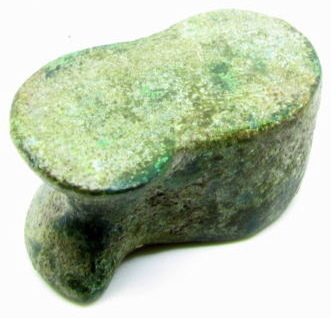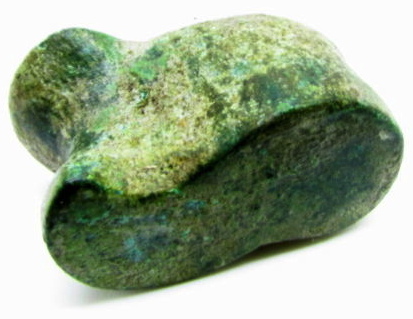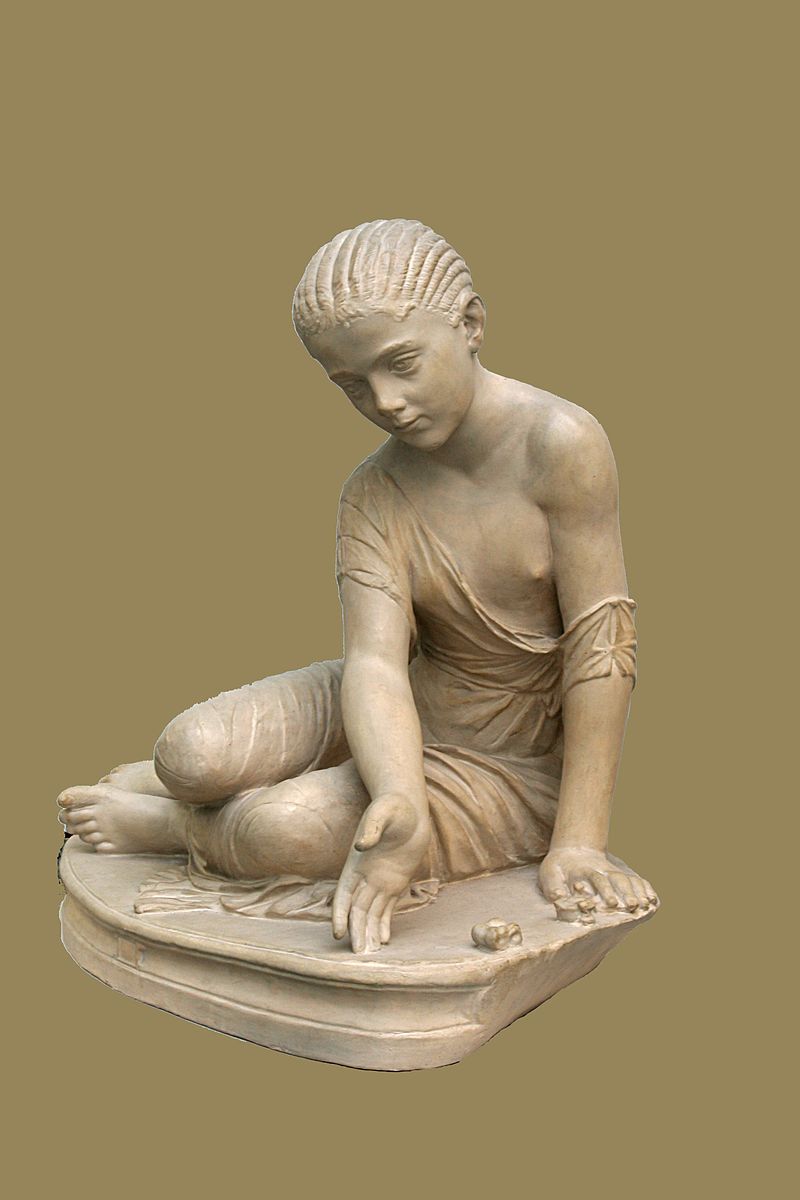 |  |
Roman bronze gaming astragalus. Very well preserved, displaying perfect smooth olive green patina. Roman: AD 100 - 200. Measurements: 30 grams, 27 mm. Condition: Very Fine. Provenance: European Art Market.
As with the three ancient Roman dice in this collection the brass astragalus (or “knucklebone”) is here for completeness, representing the other way that an artefact was used in a combination of chance and skill to support multiple religious, recreational and commercial practices.
The astralagus bone has been found in a wide range of archaeological sites around the Mediterranean sea and as far back as Neolithic contexts. Whilst usually interpreted in terms of its role in games and gaming it may also have formed the role of a primitive form of currency.1
Originally the knucklebone was a bone from the ankle or hock of a sheep. Later they were rendered in more artistic form in brass or other materials. This one is provisionally dated as being from the C2 AD Roman empire. In modern usage games played with knucklebones (usually now in plastic) consist of tossing one into the air and picking up one or more whilst it is in the air either in the hand, or on the back of the hand. Different sequences of requirements are set for different games.
Sophocles ascribes the invention of knucklebones to Palmedes during the Trojan war,2 whilst Plato ascribes the origin to the Egyptian god Thoth. The use of knucklebones is depicted in a painting uncovered in the buried ruins of Pompei and is described in ancient literature. Whilst one use followed the modern use in games of skill, an alternative use was similar to the use of dice, by throwing the astragali from a cup or hand onto a table, counting values for each side. The astragalus is suitable for this because of it’s asymmetric form. With its two broad and two narrow sides, the convex narrow side counted I; the convex broad side 3; the concave broad side 4; and the concave narrow side 6. With four astragali 35 different possible scores were possible turning the artefact into a well honed technology for generating random numbers.
Below is a Roman statue of a girl playing with an astragalus.
 |
1 Richard Holmgren, ‘“Money on the hoof” The astragalus bone – religion, gaming and primitive money’, in PECUS. Man and animal in antiquity, Proceedings of the conference at the Swedish Institute in Rome, September 9–12, 2002. Ed. Barbro Santillo Frizell (The Swedish Institute in Rome. Projects and Seminars, 1), Rome 2004, pp. 212–9. (↑)
2 E. N. David, Games, Gods & Gambling, Hafner Publishing Company, New York, 1962, p. 6. (↑)
Pages linked to this page
 This work by Jim Falk is licensed under a Creative Commons Attribution-NonCommercial-NoDerivs 3.0 Unported License Click on the logo to the left to see the terms on which you can use it.
This work by Jim Falk is licensed under a Creative Commons Attribution-NonCommercial-NoDerivs 3.0 Unported License Click on the logo to the left to see the terms on which you can use it.